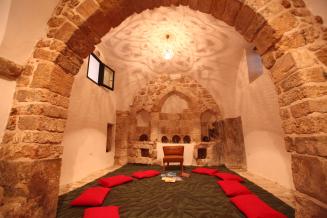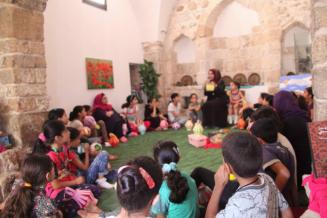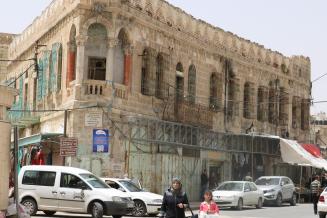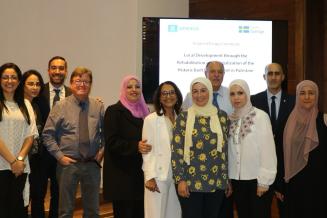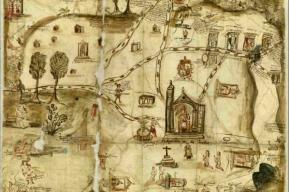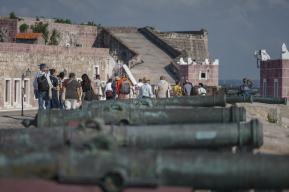News
75 Steps Towards Preserving Palestinian Cultural Heritage
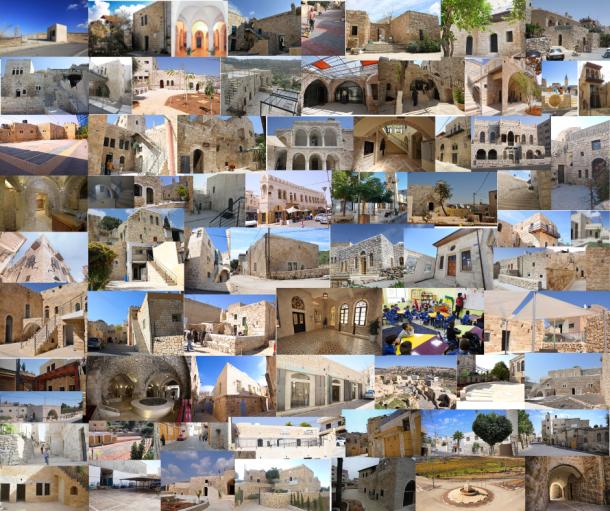
Back in 2012, UNESCO and Sweden initiated an almost decade long project to restore and protect built cultural heritage in Palestine. The 18-million-dollar project aimed to breathe life back into sites that were lying idle, no longer serving their communities or contributing to local development.
Throughout the lifetime of the project, UNESCO and partners rehabilitated and restored 75 sites around the West Bank, Gaza and Jerusalem. These are now vibrant and thriving structures which are serving their local communities in myriad ways. Read below about some examples of transformations brought about through the project.
Al Khader Library, Gaza
In Gaza, for example, the formerly dilapidated edifice of Al Khader Monastery, believed to date back to 1700 B.C. making it one of the oldest (if not the oldest!) sites in the Gaza Strip, was converted into a children’s library.
The library is the jewel of our work at NAWA. Despite the difficult context in Gaza, the library is spreading hope and having a positive impact on children’s learning and wellbeing. It’s changing lives.
Tulkarem Women’s Development Center:
In Tulkarem, a historical building was renovated and is now home to the Women's Development Center which has been running since 2002 but needed a functional space for its work. The center implements projects and activities that focus on supporting and empowering the women of Tulkarem and the surrounding villages. They run a food preparation program, offer loans to support small-size projects, and run trainings and workshops that empower women politically, socially and economically.
The Old Hebron Museum
Perhaps the most high-profile site renovation was the transformation of the former Palestine Hotel into the Old Hebron Museum located in Hebron / Al Khalil Old Town, which has been inscribed on the UNESCO World Heritage List since 2017. Though the Palestine Hotel had borne witness to many decades of history in Palestine, it lay empty for almost 20 years before renovations began. The Old Hebron Museum opened its doors to the public in October 2021 and today showcases pivotal moments in the complex history of Palestine and Hebron.
A New Future For Forgotten Spaces
However, the project extended far beyond the direct restoration and rehabilitation of these sites, and encompassed policy advocacy, awareness raising and community engagement with a view to ensuring the sustainability of the project into the future.
Throughout the lifetime of the project, over 111,000 job opportunities were created, and 170 workers, engineers and architects were trained.
‘A New Future for Forgotten Spaces: Successful Interventions from the Historic Environment of Palestine’ was published when all the renovations were completed, and brings the reader on a journey across Palestine, listing all 75 sites and highlighting a number of key interventions in Gaza, Hebron, Bethlehem, Nablus and more.
Closing Ceremony
On 8 June 2023, UNESCO and Sweden invited partners and stakeholders to the closing ceremony of the project. Despite the final interventions being completed a while prior to this, it was the first chance that all involved could come together to reflect on the challenges and successes of the project, and those who were positively impacted could explain how the interventions are continuing to benefit local communities.
The event consisted of panel discussions featuring partners and local communities who had benefitted from the project. Discussions delved into various issues such as built heritage preservation, local development and cultural heritage preservation in Palestine as a means of strengthening cultural identity.
Sweden, UNESCO and four of the main cultural heritage organizations in Palestine set out on this journey with a shared vision to preserve Palestinian cultural heritage for current and future generations. This vision was realized. We would like to recognize and warmly thank all those who have contributed to this ambitious endeavour.
Apart from the practical benefits these rehabilitated buildings bring to local Palestinian communities, providing much needed spaces for everything ranging from youth clubs, women centers, schools and kindergartens to cultural and community centers, the preservation and restoration of these old buildings also serve to preserve and highlight the collective cultural and historical identity of the Palestinian people.
Rehabilitating and Revitalizing the Historic Built Environment in Palestine
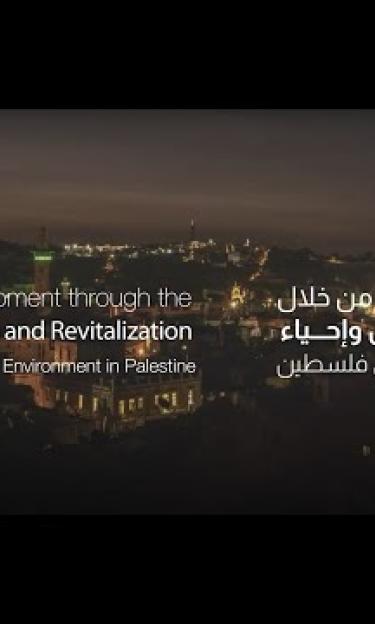
This project was funded by the Government of Sweden, and implemented by UNESCO Ramallah in partnership with the Centre for Cultural Heritage Preservation, the Hebron Rehabilitation Committee, Riwaq Centre for Architectural Conservation, and Taawon’s Old City of Jerusalem Rehabilitation Project.


